Ion Propulsion for Star Trek's Enterprise model
As a result of some ion propulsion work I'd done I got the idea to add ion propulsion to a small model of Star Trek's Enterprise and see if I could propel in around on a rotor. The photos below shows the result.
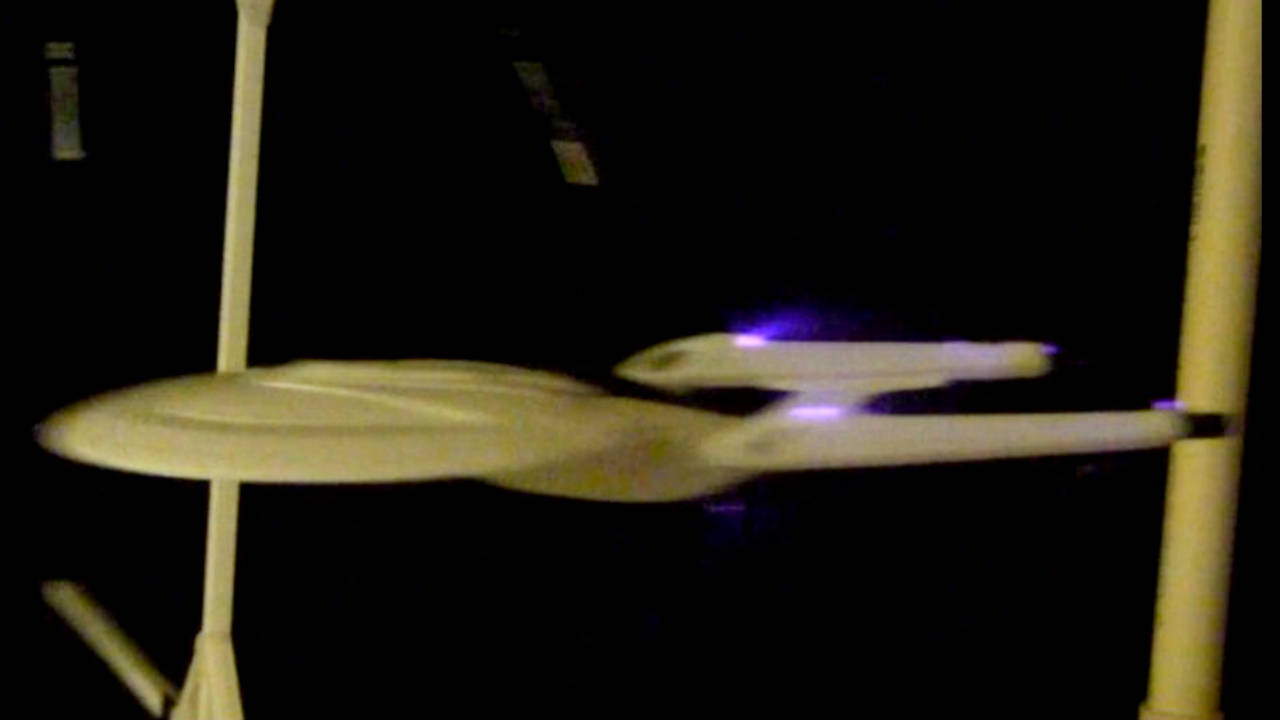
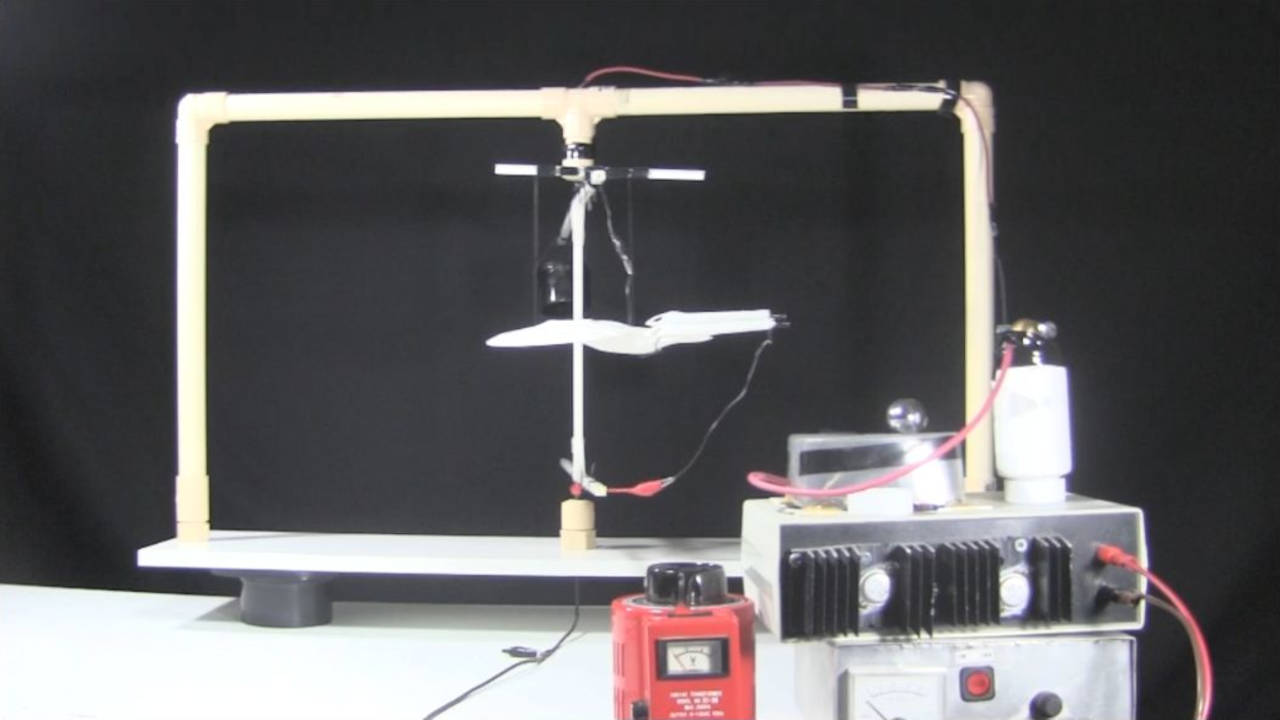
How it's made
I first cut holes in the front and back of the nacelles.
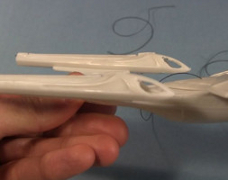
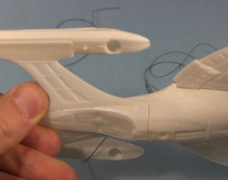

I then made a T-shape out of stranded wire and stripped and spread the strands out on the ends of the T to give me multiple sharp points. I put this in the front of the nacelles.
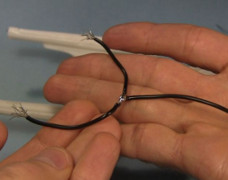
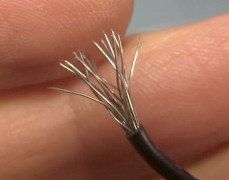
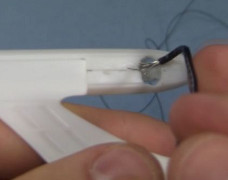
Next, I cut a short piece of aluminum foil and rolled it up. I then placed that in the middle of another piece and folded that over, giving me a piece with one side rounded. I then rolled it around a dowel making a cylinder with the rounded side at one end. I inserted one of those into the back of each nacelle with the rounded end facing inward and connected a wire to them.

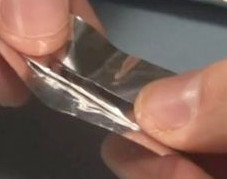
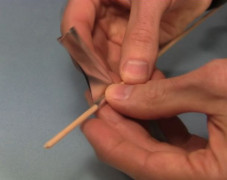
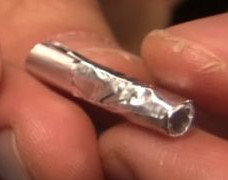
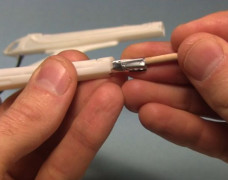
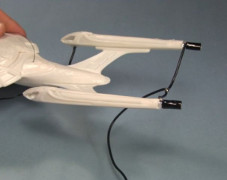
I next hung it from one end of the rotor for my PVC test rig. I connected it to my high voltage power supply.

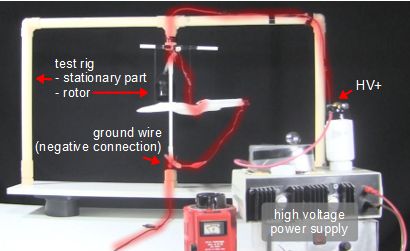
As I gradually increased the voltage, the Enterprise pulled the rotor around. It didn't go super fast given its weight and the weight of the counterweight on the other side of the rotor, and due to the small diameter of the nacelles, but it did rotate nicely.

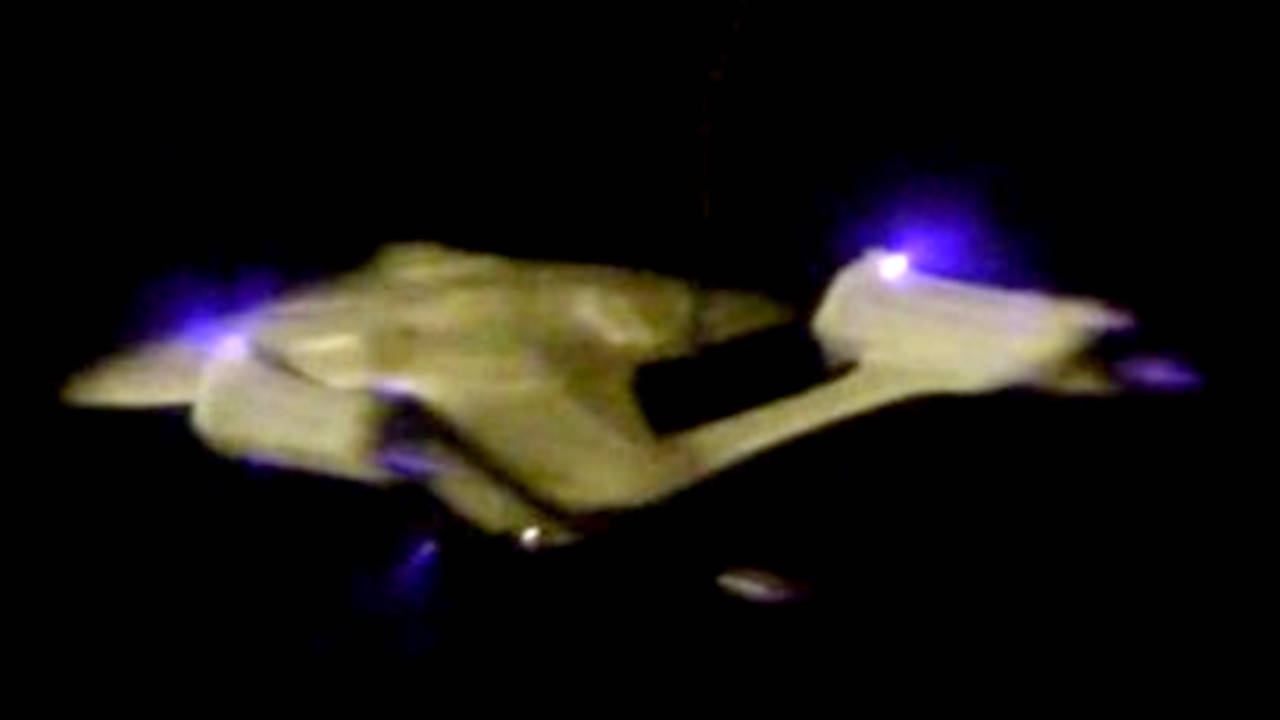
As the photos above show, a lot of the bluish corona was outside the nacelles and I suspect a lot of the ion wind that makes it move was too.
As a last step I wanted to see the airflow so I turned all of the lights back on and lit up an incense stick. I then fixed the rotor in place so that the Enterprise would not move. As the photo below shows the airflow from the ion propulsion is pretty much as expected.
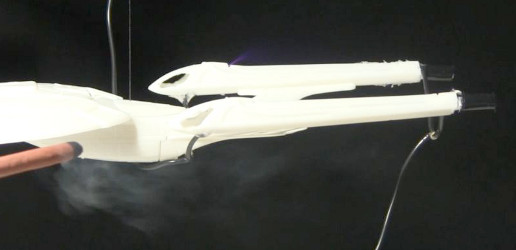
Adding a laser to the Enterprise
Video - Star Trek Enterprise Model with Ion Propulsion added
Here's my video showing the making of it step-by-step along with some demonstrations, including a smoke test to show the airflow.
Video - How to add Ion Propulsion to Star Wars TIE Fighter Model
In this video I show adding ion propulsion to a Star Wars TIE Fighter model instead.

